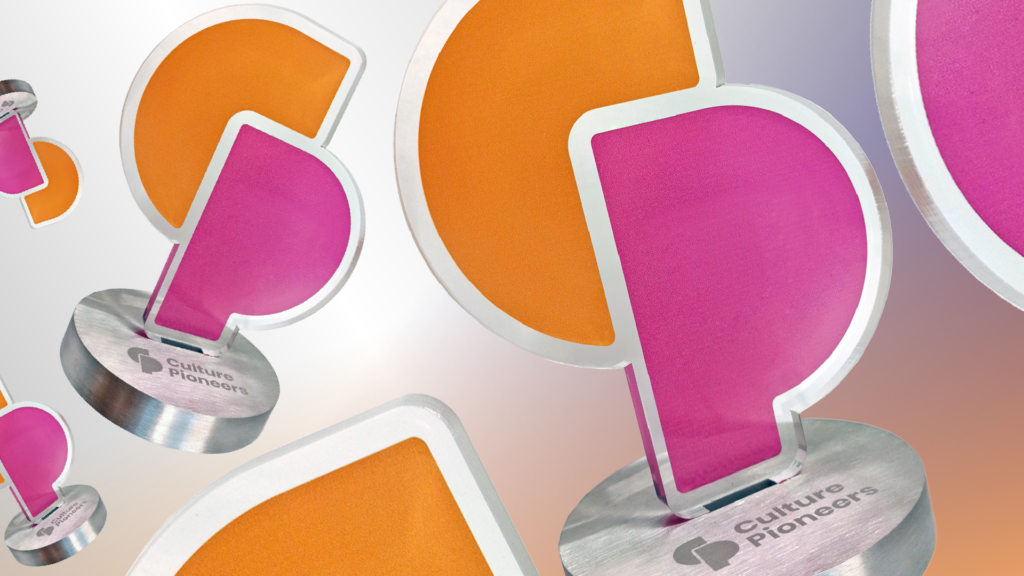As trainers, we know intuitively what works well to maximise learning and the embedding of that learning.
It can be difficult, however, to get the support of line managers and other stakeholders to achieve the best results against the background of all the other pressures they’re facing.
This article will look at how we can leverage neuroscience to provide evidence to support our arguments and persuade our stakeholders.
Pre-course objective setting conversations with line managers
Reticular activating system
You’ve asked the line managers to have a pre-course conversation with their participants to establish learning objectives.
At the start of the event, however, you’re collecting learners’ objectives and you’re hearing phrases like, ‘I’m open-minded’, ‘anything I can learn, really’, etc.
So, how can we encourage the line managers to have that conversation? You might start by telling them about the RAS.
People who make a plan, write it down or make a vision board, and particularly if they look at it regularly, generally achieve their plans faster.
There’s a part of our brain called the reticular activating system (RAS) which, among other things, tells us what to focus on and pay attention to.
Have you seen the YouTube clip where you are told to watch two teams passing balls, and count the number of times the white ball is passed?
Most people totally miss the gorilla that comes onto the pitch and waves, because we’re paying attention to the white ball and we miss everything else.
There can be up to two million bits of data around us at all times – images, sounds, tastes, colours, etc. – it’s too much to process, so our RAS filters it all for us, making sure we pay attention to what is important.
How does it know what is important? The answer is that it makes us pay attention to what we focus on.
Have you noticed that if someone says, ‘I can’t do this’, then they are right? Our RAS makes us focus on all the reasons why not. It will show you things that fit your current frame of reference.
This is why people who make a plan, write it down or make a vision board, and particularly if they look at it regularly, generally achieve their plans faster. Their RAS has been programmed to pay attention to and to show them opportunities that fit.
If we have a conversation with our line managers before a learning event, if we discuss what we hope to learn, how we might implement it, how that will benefit us, the team and the company, then the RAS has been programmed to focus on anything that comes up during the learning event that will help us in our goal.
It means our learners are primed and ready to learn.
Learned helplessness
This pre-course conversation should also eliminate the problem of ‘learned helplessness’.
Researchers who tested animals found that if an animal felt powerless to escape electric shocks, eventually they would learn to stand and receive them, even when they could actually escape.
This can also happen to our learners. They get ‘sent’ on a course, without any conversation about why, and afterwards they get no support in implementing any of their ideas.
If this happens just a couple more times, then your participant has learned helplessness and will ‘endure’ the training with no hope of learning or improving anything afterwards.
During the learning
Allowing enough time
One of the great tools in our kit is accelerated learning – if only it were called something else!
The name gives the impression to stakeholders that we can halve the time spent learning. In fact, accelerated learning is all about ensuring that more of the learning sticks and that we can apply it to change our behaviours.
You may be familiar with Colin Rose’s MASTER training structure and Howard Gardner’s Multiple Intelligences. These structures and media help us to embed the learning and change behaviours, but they take time.
Learning is not just about getting across the content, and it’s not the same as memory either.
Try explaining the purpose of the different learning methods you’ll be using. Not all will suit everyone, but all will help us learn more effectively.
During learning you will create and code memories and you will also need to be able to recall that memory to demonstrate learning.
Learning creates structural changes in the brain to build on existing knowledge and to change behaviours. (This may require some ‘un-learning’ too!)
Using multi-sensory input
You’ve just announced that small teams will now create a drawing to put together everything we’ve learned today, and you’ve been met with a groan, and possibly some eye rolling.
We don’t ask learners to use different media just to make it ‘fun’. Next time, try explaining the purpose of the different learning methods you’ll be using. Not all will suit everyone, but all will help us learn more effectively.
Throughout the day, what we learn is stored temporarily in the hippocampus. Did you hear that London taxi drivers have enlarged hippocampi, from having to learn ‘the knowledge’ (the taxi routes across the whole of London)?
Neurons that fire together, wire together, and the link becomes stronger and stronger, helping us to create habits and patterns of the new desirable behaviours.
Overnight, the hippocampus sorts and stores the memories across different parts of the brain.
Our brains are not like a filing cabinet where we store all the information learned on this course in one folder. Instead, the hippocampus puts all the memories in different parts of the brain, depending on the type of memory.
These memories held in neurons are linked by synapses, wiring the memories together, albeit faintly at first (more on this later). The more multisensory the input, the more places the memory is stored and wired together, giving us the greatest chance of recall.
Post-learning reviews
“Did you enjoy your day out?”
Is this the closest your participants get to a post-learning review with their line manager?
On most of our learning events, we will run some form of review each morning to revisit what we learned the previous day, to overcome the Ebbinghaus Forgetting Curve. This has strong benefits and is based in neuroscience.
The information our hippocampus stores overnight is stored, never lost, but recall can be a problem.
As the memories are stored overnight, sometime over the next 24 hours is optimal for trying to recall.
Our next morning reviews, preferably focusing on asking the learners to recall, not to review or re-read are a great step to ensure the memory is kept, as it strengthens the synapses between the neurons storing the information.
Neurons that fire together, wire together, and the link becomes stronger and stronger, helping us to create habits and patterns of the new desirable behaviours.
Our problem arises after the learning event, however, so we need the line manager to have a conversation the next day to ask what the participant learned.
Furthermore, they need to follow up the next week to ask about action plans, then the following month to enquire how the action plans are coming along, what else needs to be done, how are they overcoming any problems that are arising, and to find out what support they need.
This constant revisiting will embed the learning and change behaviours.
Learning to learn
Perhaps the best way of securing stakeholder support would be to hold a short ‘learning to learn’ intervention.
In this, you could highlight the benefits of pre-and-post learning conversations, multisensory learning, accelerated learning, post course coaching and a brain-friendly approach.
This may just be the first step to making a difference to the amount of learning embedded in your organisation.
Interested in this topic? Read Closing the knowing/doing gap: how to use neuroscience to apply learning on the job.
As trainers, we know intuitively what works well to maximise learning and the embedding of that learning.
It can be difficult, however, to get the support of line managers and other stakeholders to achieve the best results against the background of all the other pressures they’re facing.
This article will look at how we can leverage neuroscience to provide evidence to support our arguments and persuade our stakeholders.
Pre-course objective setting conversations with line managers
Reticular activating system
You’ve asked the line managers to have a pre-course conversation with their participants to establish learning objectives.
At the start of the event, however, you’re collecting learners’ objectives and you’re hearing phrases like, ‘I’m open-minded’, ‘anything I can learn, really’, etc.
So, how can we encourage the line managers to have that conversation? You might start by telling them about the RAS.
People who make a plan, write it down or make a vision board, and particularly if they look at it regularly, generally achieve their plans faster.
There’s a part of our brain called the reticular activating system (RAS) which, among other things, tells us what to focus on and pay attention to.
Have you seen the YouTube clip where you are told to watch two teams passing balls, and count the number of times the white ball is passed?
Most people totally miss the gorilla that comes onto the pitch and waves, because we’re paying attention to the white ball and we miss everything else.
There can be up to two million bits of data around us at all times – images, sounds, tastes, colours, etc. – it’s too much to process, so our RAS filters it all for us, making sure we pay attention to what is important.
How does it know what is important? The answer is that it makes us pay attention to what we focus on.
Have you noticed that if someone says, ‘I can’t do this’, then they are right? Our RAS makes us focus on all the reasons why not. It will show you things that fit your current frame of reference.
This is why people who make a plan, write it down or make a vision board, and particularly if they look at it regularly, generally achieve their plans faster. Their RAS has been programmed to pay attention to and to show them opportunities that fit.
If we have a conversation with our line managers before a learning event, if we discuss what we hope to learn, how we might implement it, how that will benefit us, the team and the company, then the RAS has been programmed to focus on anything that comes up during the learning event that will help us in our goal.
It means our learners are primed and ready to learn.
Learned helplessness
This pre-course conversation should also eliminate the problem of ‘learned helplessness’.
Researchers who tested animals found that if an animal felt powerless to escape electric shocks, eventually they would learn to stand and receive them, even when they could actually escape.
This can also happen to our learners. They get ‘sent’ on a course, without any conversation about why, and afterwards they get no support in implementing any of their ideas.
If this happens just a couple more times, then your participant has learned helplessness and will ‘endure’ the training with no hope of learning or improving anything afterwards.
During the learning
Allowing enough time
One of the great tools in our kit is accelerated learning – if only it were called something else!
The name gives the impression to stakeholders that we can halve the time spent learning. In fact, accelerated learning is all about ensuring that more of the learning sticks and that we can apply it to change our behaviours.
You may be familiar with Colin Rose’s MASTER training structure and Howard Gardner’s Multiple Intelligences. These structures and media help us to embed the learning and change behaviours, but they take time.
Learning is not just about getting across the content, and it’s not the same as memory either.
Try explaining the purpose of the different learning methods you’ll be using. Not all will suit everyone, but all will help us learn more effectively.
During learning you will create and code memories and you will also need to be able to recall that memory to demonstrate learning.
Learning creates structural changes in the brain to build on existing knowledge and to change behaviours. (This may require some ‘un-learning’ too!)
Using multi-sensory input
You’ve just announced that small teams will now create a drawing to put together everything we’ve learned today, and you’ve been met with a groan, and possibly some eye rolling.
We don’t ask learners to use different media just to make it ‘fun’. Next time, try explaining the purpose of the different learning methods you’ll be using. Not all will suit everyone, but all will help us learn more effectively.
Throughout the day, what we learn is stored temporarily in the hippocampus. Did you hear that London taxi drivers have enlarged hippocampi, from having to learn ‘the knowledge’ (the taxi routes across the whole of London)?
Neurons that fire together, wire together, and the link becomes stronger and stronger, helping us to create habits and patterns of the new desirable behaviours.
Overnight, the hippocampus sorts and stores the memories across different parts of the brain.
Our brains are not like a filing cabinet where we store all the information learned on this course in one folder. Instead, the hippocampus puts all the memories in different parts of the brain, depending on the type of memory.
These memories held in neurons are linked by synapses, wiring the memories together, albeit faintly at first (more on this later). The more multisensory the input, the more places the memory is stored and wired together, giving us the greatest chance of recall.
Post-learning reviews
“Did you enjoy your day out?”
Is this the closest your participants get to a post-learning review with their line manager?
On most of our learning events, we will run some form of review each morning to revisit what we learned the previous day, to overcome the Ebbinghaus Forgetting Curve. This has strong benefits and is based in neuroscience.
The information our hippocampus stores overnight is stored, never lost, but recall can be a problem.
As the memories are stored overnight, sometime over the next 24 hours is optimal for trying to recall.
Our next morning reviews, preferably focusing on asking the learners to recall, not to review or re-read are a great step to ensure the memory is kept, as it strengthens the synapses between the neurons storing the information.
Neurons that fire together, wire together, and the link becomes stronger and stronger, helping us to create habits and patterns of the new desirable behaviours.
Our problem arises after the learning event, however, so we need the line manager to have a conversation the next day to ask what the participant learned.
Furthermore, they need to follow up the next week to ask about action plans, then the following month to enquire how the action plans are coming along, what else needs to be done, how are they overcoming any problems that are arising, and to find out what support they need.
This constant revisiting will embed the learning and change behaviours.
Learning to learn
Perhaps the best way of securing stakeholder support would be to hold a short ‘learning to learn’ intervention.
In this, you could highlight the benefits of pre-and-post learning conversations, multisensory learning, accelerated learning, post course coaching and a brain-friendly approach.
This may just be the first step to making a difference to the amount of learning embedded in your organisation.
Interested in this topic? Read Closing the knowing/doing gap: how to use neuroscience to apply learning on the job.







